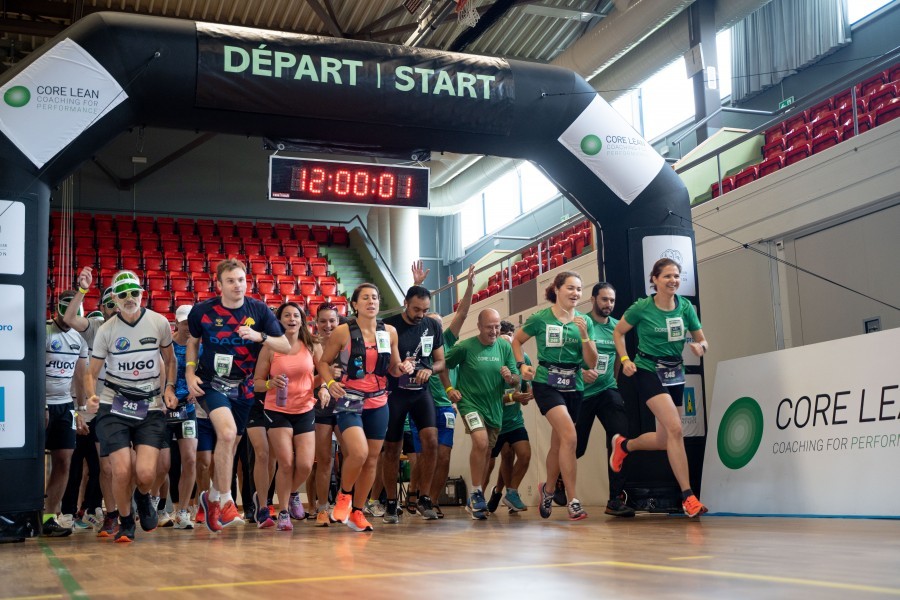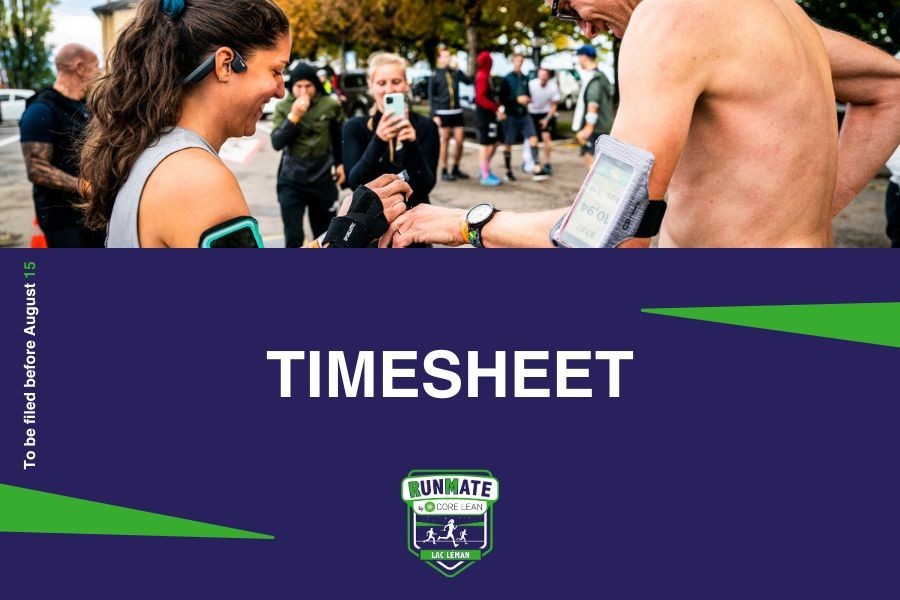We are getting closer and closer to the event and you are probably asking yourself questions about your race preparation and how to manage your effort on the course.
Marc Darchez, professional sports coach, will provide you with some answers to your questions. He took part last year in the 1st edition of Run Mate and can therefore provide you with valuable advices, having experienced the race himself!
Learn more about proper nutrition for Run Mate, how to prepare effectively for a relay race and how to manage your race with your teammates.
NUTRITION
What nutrition before / during / after the race? How to eat between the relays?
As for every race you take part in, preparation starts well before the event; it is the same for pre-race nutrition.
The week before the event, remember to hydrate yourself well (especially at D-3) and to fill up with energy. Increase your carbohydrate intake during the last 3 meals.
On the day of the race, your diet will be managed differently whether you are the first or last relay runner.
But ideally for everyone, make a complete snack or meal 3 hours before your start. Then, make sure you are well hydrated while waiting for your relay. You can have a last small snack 30’ before the departure.
The most important will take place after each of your relays.
Ideally, eat and hydrate within 30’ after your arrival and after each of your relays. Depending on the time of day, this can be a fruit, a piece of sports cake or energy and/or protein bar or a starchy dish with protein.
Remember to hydrate yourself well and make sure to bring mineral salts in your drinks if you do not take a salty snack.
There is no magic recipe, everyone has their own way of working: listen to your body and its needs. Take care of it because you will be putting a lot of strain on it for 24 hours.
PRE-EVENT PREPARATION
What kind of training should I do during prep?
It’s hard to answer this question because you all decided to do Run Mate with different distance goals and a different level.
Some prepare an ultra-endurance race for the relays at 2 and 3.
Some will seek to give the best of them on each segment and others will seek to complete the distance by taking a maximum of pleasure.
What is unique to each and is new to your body is surely the repetition of sustained efforts during the same day.
Except for the most trained among you, you are not used to doing bi- or tri-daily training…
During the race, you may have to do up to 5 relays or more and your body does not know how to handle this new constraint yet.
I would, therefore, advise you to do at least 2 or 3 training sessions a day, to feel the fatigue and the constraints of repeated efforts.
Otherwise, your best ally will be your endurance and for that, I advise you to do a large volume of training at low intensity.
Your ability to manage the repetition of efforts will be due to your endurance qualities more than your speed qualities.
How many training kilometres a week?
That’s a big question because you all surely have a different race program.
But I would advise you to achieve, per week, at least the number of kilometres you think you will run during Run Mate. If you do 3 relays for 30 kilometres of running, aim for this goal in the next few weeks.
DURING THE EVENT
How to deal with sleep deprivation?
You will not be able to avoid the big blows of tiredness on a 24-hour race even if you will surely manage to take a few micro-naps. Your form and freshness during the event will be thanks to your preparation and your management of the week before the race.
During this last week, you need to accumulate a lot of rest to have energy to spare during your weekend. There is no secret, if you arrive on Saturday with a sleep debt it will be difficult not to flinch during the event.
At the same time between your relays, being vigilant about your diet and hydration, anticipating your body’s needs will allow you to recover better between relays and to remain fresh.
Little advice: take 15’ to warm up again before each of your relays (joint mobilization, jogging, some accelerations).
Your body will get tighter and stiffer after each stint, especially since you’ll be spending a lot of time sitting in the car. This time taken before each start will be really important to ease your effort and conserve your energy throughout the event.
For the night relays, wake up at least 30’ before your start and if you have slept, do a warm-up of at least 20’ with a gradual increase in intensity.
How to recover between two relays?
Eat and drink within 30’ after your relay. Put your legs in the fresh water of the lake. Take care of your little injuries if there are any.
Massage your legs and back with Arnica oil. If you have time, take a micro nap of 10 to 20’.
What race strategy to adopt?
Another vast subject!
It’s difficult to give a global answer without knowing the composition and objective of the Team.
With a view to having fun with regular runners but not looking for performance, I advise you to choose your relays according to your qualities and your desires while keeping a regular cycle of relays. This will give you time to recover between each run.
If you are looking for performance, there are many possibilities depending on your running qualities and the composition of your team. For those with fewer runners, it may be worth considering doubling or tripling the relays during the night to allow everyone to have a longer recovery time for example. For teams of 9 in search of performance, choose the relays where you can express your qualities. The fastest on the short runs, the trailers on the runs with D+ and the long runs for the most enduring.
Build your race plan in advance. And think about your roles when you’re not running. This will account for the majority of your race time and it is not negligible!
In order to be the most efficient, you have to define as many things as possible in advance.
You will have several tasks during Run Mate:
- Driver
- Co-pilot
- Cooking chef
- Runner
- Rest
- Out-of-race challenges
It’s up to you to define what your role is on each relay to lose a minimum of time.
Example: after his run, the runner rests for 1 to 3 relays. The time for him to change, to eat, to recover. Then he can drive and then be co-driver before his next run to refocus and get into the race before his start.
It’s up to you to find your balance according to your desires and habits.
The more your race plan is defined, the more energy and time you will save.
Knowing that even with the best of plans you will have to continually adapt during the race!
Ps: a little advice! If you can in your vehicle, take a locker where you can isolate your respective belongings. This will save you from having to empty the bags at each stop to find your stuff or supplies…
We hope that these tips will be useful in your preparation and during the event! Please do not hesitate to contact us at contact@runmate.org if you have any specific questions.
See you soon
Find Marc on Facebook, Instagram and Strava and on his website.



